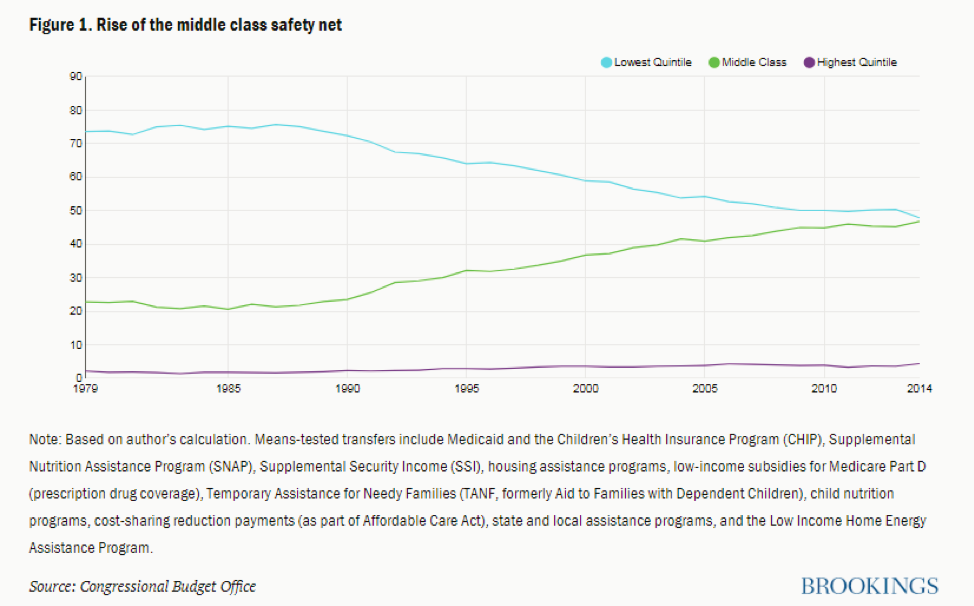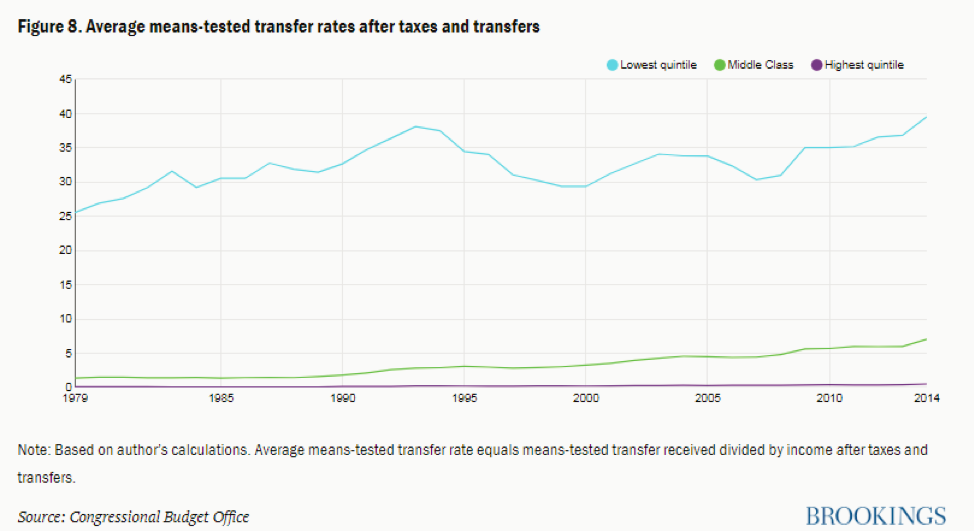In recent decades, the percentage of American citizens who receive some form of assistance from the federal government has significantly increased. According to the most recent research, 96 percent of Americans have benefited from at least one such government program, be it Medicaid, Medicare, student loans, nutritional assistance, welfare, disability, or the mortgage interest deduction.
In a new report released by the Brookings Institution, researchers Richard Reeves and Christopher Pulliam explore a related trend: the increasing percentage of safety net spending that goes to middle-class Americans. As the chart below illustrates, the percentage of means-tested transfer spending (which includes programs such as welfare, Medicaid, and the Supplemental Nutrition Assistance Program) distributed to the middle 60 percent of the income distribution has increased dramatically in recent decades:

These increases occurred among lower-middle-income families (those in the second quintile of the distribution) and among those in the middle and fourth quintiles.
Reeves and Pulliam note that the bulk of the trend seems to be driven by increases in Medicaid and SNAP spending on middle-income families. As the chart below illustrates, the majority of Medicaid spending now goes to families in the top 80 percent of the income distribution:

And while 63.2 percent of SNAP spending still goes to families at the bottom of the income distribution, almost 25 percent now goes to families in the second quintile.
This trend is particularly dramatic in households headed by an adult over the age of 65: Sixty percent of means-tested transfer spending on elderly households now goes to middle-class families, three times the percentage as in 1979.
Finally, Reeves and Pulliam look at the percentage of household income coming from the federal government. This, too, has increased for both low- and middle-income families, as the chart below illustrates:

In 2014, middle-income households received, on average, 7 percent of their income from the federal government, in comparison to only 1.4 percent in 1979.
As the political debate over the social safety net, work requirements, and the undeserving and deserving poor rages on, it’s worth remembering that, in the United States today, it’s not just low-income Americans who rely on the social safety net.




